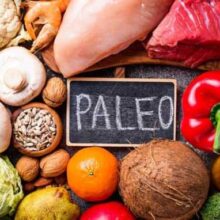Analyzing 36 Plastic Food-Contact Articles From 5 Countries, Researchers Found 9936 Different Chemicals in a Single Product That Can Affect Hormones, Metabolism, and Signal Transmission in the Body
The post Analyzing 36 Plastic Food-Contact Articles From 5 Countries, Researchers Found 9936 Different Chemicals in a Single Product That Can Affect Hormones, Metabolism, and Signal Transmission in the Body appeared first on Healthy Holistic Living.
In today’s world, plastic is ubiquitous, especially when it comes to the packaging of our food. It’s hard to imagine a grocery store without shelves lined with plastic-wrapped snacks, pre-packaged meals, and bottled beverages. While plastic offers convenience and durability, there’s a growing concern about its safety—not just for the environment but for human health as well.
Recent research reveals that plastic food packaging contains a plethora of chemicals, some of which can have profound impacts on our hormonal balance and metabolism. The complexity of these materials means they can harbor substances we’re only beginning to understand in terms of their long-term health effects. Martin Wagner, a professor from the Norwegian University of Science and Technology (NTNU), and his team have recently published findings that draw attention to nearly ten thousand different chemicals in a single sample of food packaging, highlighting the critical need for further investigation and reform.
A Global Perspective on Plastic Packaging Hazards
The ubiquity of plastic food packaging is a concern recognized worldwide, but the implications are often hidden beneath the convenience it offers. A landmark study conducted by a research group from the Norwegian University of Science and Technology (NTNU) casts a revealing light on this issue, with findings that underscore the need for urgent reassessment of what we wrap our food in.
The International Scope of the Study
The study is notable not only for its insights but also for its global reach, encompassing products from five diverse countries: the United States, the United Kingdom, South Korea, Germany, and Norway. This international approach allows the research to cover a broad spectrum of plastic packaging types, regulatory environments, and consumer habits, offering a comprehensive view of the chemical landscape lurking in our kitchens.
What Was Analyzed?
Researchers meticulously tested 36 different plastic products commonly used for food packaging, ranging from cling films to containers, sourced from the aforementioned countries. These items represent everyday usage and thus provide a realistic picture of what consumers are exposed to.
Unveiling the Chemical Maze
The findings revealed a staggering diversity in the chemical makeup of these products, with nearly 10,000 different chemicals detected in a single sample. Such diversity in chemical components, including many that are less understood or under-regulated, highlights significant discrepancies in manufacturing and safety standards across borders.
The Impact of Varied Regulations
The involvement of multiple countries in the study brings to light the varied regulatory landscapes governing plastic use. For instance, while the European Union, represented by Germany and the UK in the study, generally adheres to stricter regulations concerning plastic additives, the practices in the United States and South Korea might differ, leading to a broader spectrum of chemical presence in consumer products.
This disparity not only affects global health but also complicates international efforts to manage plastic waste and chemical exposure. Consumers are often unaware of the chemical interactions they are subjected to, mainly because the global market means that products and their components can originate from countries with vastly different safety standards.
Engaging Consumer Curiosity
The NTNU study is a call to action for consumers and regulators alike, highlighting the need for more transparent labeling, stricter global standards, and greater consumer awareness. It invites the curious to consider not just what they eat, but what their food comes into contact with, linking everyday choices to global environmental and health outcomes.
The Composition of Plastic Packaging
Plastic food packaging, a staple in modern life, is far more complex than it appears. Composed of myriad chemicals, these materials serve various functions, from enhancing durability to preserving freshness. However, this chemical complexity can also pose significant health risks.
Understanding Plastic’s Complexity: Plastic is not a single substance but a category of materials designed with a wide range of chemical additives. These additives can include plasticizers for flexibility, flame retardants for safety, and colorants for aesthetic appeal. The diversity in plastic composition means that each type of packaging might interact differently with the foods it contains.
Research Findings on Chemical Diversity: In a groundbreaking study led by Professor Martin Wagner at NTNU, researchers identified an astounding 9,936 different chemicals in just one sample of plastic food packaging. This revelation underscores the intricate and potentially hazardous nature of these materials. Wagner’s team, including PhD candidates Molly McPartland and Sarah Stevens, published their findings in the journal Environmental Science & Technology, highlighting the scope of substances that consumers might unknowingly encounter.
Potential Harmful Effects: Among the vast array of chemicals found, many are not commonly known or studied, making it difficult to fully assess their impact on health. However, the presence of such a high number of unknown chemicals raises concerns about their potential to interfere with human biology, particularly in terms of hormone function and metabolic processes.
This section not only underscores the chemical complexity of plastic food packaging but also sets the stage for a deeper exploration of how these chemicals can affect human health, which will be discussed in the following sections.
Health Impacts of Chemicals in Plastics
The research into the effects of chemicals in plastic food packaging has increasingly shown that these materials can disrupt hormonal and metabolic functions in the human body. Several studies have provided deeper insights into how these chemicals affect our health, particularly through their interaction with hormonal systems.
Endocrine and Metabolic Disruptions: Plastics are not just passive barriers but active chemical mixtures that interact with the body. Researchers have identified a wide range of chemicals in plastic food packaging that can disrupt endocrine functions, which are critical for maintaining hormonal balance and metabolic processes. Chemicals such as bisphenols and phthalates have been shown to interfere with everything from reproductive health to metabolic rates.
Recent Studies and Findings: A comprehensive study by researchers from the Norwegian University of Science and Technology (NTNU) highlighted the presence of up to 9,936 chemical features in single samples of plastic food packaging. These findings are crucial because they provide a snapshot of the chemical diversity found in everyday products and underscore the potential health risks associated with such exposure.
The study used sophisticated techniques like high-resolution mass spectrometry and reporter gene assays to analyze these chemicals. Specifically, they focused on nuclear receptors such as the pregnane X receptor (PXR), peroxisome proliferator-activated receptor gamma (PPARγ), and estrogen and androgen receptors, which are pivotal in hormonal and metabolic regulation. The research concluded that many of these chemicals could activate or inhibit these receptors, thus potentially leading to health issues.
Implications for Public Health: The findings from NTNU and other institutions suggest that the chemical complexity of plastics used in food packaging is a significant concern. Not only do these chemicals have the potential to disrupt hormonal and metabolic functions, but they also represent a broader environmental health issue, as they can leach into food and beverages and then into the human body.
Given the prevalence of these chemicals and their potential impact, there is a pressing need for stricter regulations and a move towards safer alternatives in food packaging. Consumers are also encouraged to be aware of the risks and consider reducing their reliance on plastic-packaged products.
This exploration into the health impacts of plastics not only highlights the risks but also calls for concerted efforts towards safer packaging solutions to mitigate these health concerns.
How Plastics Affect Body Signaling
Recent research has highlighted a significant concern regarding the interaction between plastic food packaging chemicals and G-protein-coupled receptors (GPCRs), which are crucial mediators of cell signaling and physiological functions. These interactions suggest a profound influence of plastics on bodily processes, including those related to metabolism and circadian rhythms.
GPCR and Plastic Chemicals Interaction: A study using a high-throughput screening of 126 human non-olfactory GPCRs found that chemicals extracted from various types of plastic food packaging interacted with these receptors. Notably, the study identified interactions with receptors such as Adenosine receptor 1 (ADORA1) and Melatonin receptor 1 (MTNR1A), which play roles in sleep-wake cycles and metabolic processes. These findings suggest that certain plastic chemicals can influence these critical body functions by activating or inhibiting these receptors.
Potential Health Implications: The activation of GPCRs by plastic-derived chemicals indicates potential disruptions in fundamental physiological processes. For example, the interaction with ADORA1 and MTNR1A receptors could affect sleep patterns and metabolic functions, which are essential for overall health. This emerging evidence underscores the complexity of plastic chemical impacts beyond the more commonly discussed hormonal disruptions.
Broader Implications for Safety and Regulation: These discoveries have led researchers to advocate for a broader examination of how plastic chemicals interact with various signaling pathways in the body. The novel interactions with GPCRs suggest that current assessments may underestimate the potential risks associated with plastic food packaging. This research supports the need for regulations that consider the full spectrum of plastic chemical effects on health, urging a reevaluation of safety standards for materials in contact with food.
The implications of these findings are profound, highlighting an urgent need for further research and possibly reshaping how we regulate and use plastics in food packaging to safeguard public health.
Safety Concerns and Environmental Impact of Plastic Food Packaging
Plastic food packaging, while ubiquitous in our daily lives, presents significant health and environmental challenges that need urgent attention. The materials used in these packages often contain a wide range of chemicals, many of which have been linked to serious health concerns.
Health Risks from Chemical Exposure: Recent studies have shown that chemicals commonly found in plastic food packaging can leach into food and drinks. These chemicals include bisphenols, phthalates, and per- and polyfluoroalkyl substances (PFAS), also known as “Forever Chemicals.” These substances have been linked to a variety of health issues such as cancer, reproductive and developmental problems, and endocrine disruption. Concerningly, these chemicals are found in high concentrations in the human body, largely surpassing those of pesticide residues.
Environmental Implications: The environmental impact of plastic packaging is profound. Plastics contribute to significant pollution, especially in oceans and soils, where they break down into microplastics and nanoplastics. These particles not only contaminate the environment but also enter the food chain, affecting both wildlife and human health. The pervasive nature of plastic pollution in agricultural soils is particularly alarming as it threatens food security and ecosystem health.
Regulatory and Industry Response: There is a growing recognition of the need for stricter regulation and better management practices to mitigate the impact of hazardous chemicals in plastics. Some regions, like the EU, have implemented more stringent controls which have led to better health outcomes compared to regions with less stringent controls, such as the US. Moreover, there are calls for the packaging industry to adopt safer, sustainable practices by reducing the use of harmful chemicals and transitioning to biodegradable and compostable alternatives.
The information underscores the need for a comprehensive approach to tackle the issues associated with plastic food packaging. This includes improving chemical safety standards, promoting sustainable packaging alternatives, and enhancing consumer awareness and regulatory frameworks to safeguard health and the environment.
Practical Tips for Reducing Plastic Use
Reducing exposure to harmful chemicals in plastic packaging is crucial for both health and environmental sustainability. Here are several practical tips and strategies to minimize your interaction with these substances:
Choose Alternatives to Plastic Containers: Whenever possible, opt for glass, stainless steel, or ceramic containers for storing and heating food. These materials do not leach chemicals into food and are safer for both heating and long-term food storage.
Avoid Heating Food in Plastic: Heating plastic can increase the release of harmful chemicals into food. Avoid using plastic containers in microwaves or for storing hot foods and liquids. Instead, transfer food to non-plastic containers before heating or consuming hot foods.
Use Safer Kitchen Products: Replace plastic utensils and kitchenware with those made from safer materials like wood, bamboo, or stainless steel. Additionally, consider using natural alternatives like beeswax wraps instead of plastic wrap, and avoid using plastic straws and cutlery.
Be Cautious with Children’s Products: Opt for toys and other children’s products made from natural materials instead of plastics, especially for items that young children might put in their mouths. This helps to reduce their exposure to potential toxins from plastics.
Check Recycling Codes: Be mindful of the recycling codes on plastic products. Avoid plastics labeled with recycling codes 3, 6, and 7, as these are known to contain phthalates, styrene, and bisphenols, which are harmful chemicals.
Improve Indoor Air Quality: Use a vacuum cleaner with a HEPA filter to reduce the accumulation of toxic particles from plastics and other materials in your home. Also, consider reducing the use of scented products, which can emit a range of volatile organic compounds (VOCs) into your home environment.
By implementing these steps, you can significantly lower your exposure to the harmful chemicals commonly found in plastic products and contribute to a healthier, more sustainable living environment.
Embracing Safer Choices in Plastic Use
The journey through understanding the hidden risks of plastic food packaging unveils a complex landscape of chemical hazards that impact both human health and the environment. From disrupting hormonal functions to contaminating ecosystems, the pervasive presence of plastics demands urgent attention and action. However, this challenge also presents an opportunity to advocate for change and adopt healthier, more sustainable practices in our daily lives.
Empowering ourselves with knowledge about the materials that come into contact with our food and the air we breathe is the first step toward making safer choices. By opting for alternatives to plastic, such as glass and stainless steel, and by being mindful of how we store and heat our food, we can significantly reduce our exposure to harmful chemicals. Furthermore, supporting regulations that demand greater transparency and safety in food packaging can drive wider systemic change, pushing industries toward innovations in sustainable packaging.
Each small action contributes to a larger effort to safeguard our health and protect the planet. By choosing to reduce our reliance on plastics and by advocating for better practices and policies, we are taking critical steps toward a healthier future for ourselves and subsequent generations. Let’s continue this conversation and spread awareness, making each decision a step towards a less plastic-dependent world.
The post Analyzing 36 Plastic Food-Contact Articles From 5 Countries, Researchers Found 9936 Different Chemicals in a Single Product That Can Affect Hormones, Metabolism, and Signal Transmission in the Body appeared first on Healthy Holistic Living.












